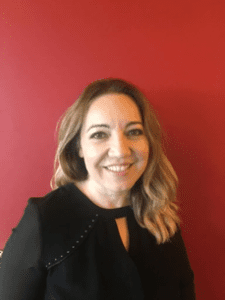 Companies like Amazon, Walmart, Alibaba, and Zara are leading the path in the use of technology and advanced analytics in managing supply chains. Artificial Intelligence (AI) and Machine Learning (ML) are of the hot topics being discussed in the retail world. Across the globe, whether they are grocery, mass merchant, or fashion, retailers are looking for ways to make faster and smarter decisions using this technology. Among the leading applications of AI & ML in planning are forecasting and replenishment processes.
Companies like Amazon, Walmart, Alibaba, and Zara are leading the path in the use of technology and advanced analytics in managing supply chains. Artificial Intelligence (AI) and Machine Learning (ML) are of the hot topics being discussed in the retail world. Across the globe, whether they are grocery, mass merchant, or fashion, retailers are looking for ways to make faster and smarter decisions using this technology. Among the leading applications of AI & ML in planning are forecasting and replenishment processes.
Getting Closer to the Customer
This is now part of everyday conversation, and those who are pushing the envelope on that front know it takes more than just getting customer insights reports out of CRM systems.
In order to turn those insights into actions; delight the customers and ultimately make an impact on the bottom line, companies need smarter and more agile supply chain capabilities.
For retailers, customer-centric inventory management is the key to maximizing sales potential. To do that, they need smarter and more agile forecasting and replenishment systems that can address fluctuations and variances in customer preferences at more and more granular levels. For brick and mortar stores, this means getting down to the location level, for e-commerce, this means getting down customer segment and even to the individual customer level.
Agile Forecasting & Replenishment
When asked about the top organizational inhibitors preventing retailers from innovating, 60% of the RSR research respondents called out legacy technologies as the main challenge. No wonder, retailers determined to rise to the competitive challenges are constantly looking for ways to improve their technological capabilities.
According to CBInsights research, funding to supply chain & logistics tech continued to rise. So what of the new technologies makes it worthwhile to spend time and effort to upgrade from legacy systems?
AI & ML for Retailers
AI and Machine-learning are quickly becoming differentiating capabilities for Demand Planning and Replenishment solutions.
As retailers explore these types of capabilities, they need to keep their focus on the business impacts. Ultimately, these need to serve their business goals and priorities:
- Keep up with customer demands and delight customers
- Improve service levels
- Reduce inventory and/or logistics costs
- Improve the speed in decision making and fuel innovation
 Asena Yosun Denizeri is the Head of Retail Solutions at Solvoyo. Asena has more than 20 years of experience in implementing Planning, Pricing, and Optimization solutions in global companies in the U.S. and Europe. She has led cross-functional teams in large-scale implementation projects touching different aspects of Retail Management, including Product Lifecycle Management, Category Planning, Assortment Localization, Demand Planning, Size Optimization, Promotion Planning, Allocation & Replenishment, Markdown Optimization, and Supply Chain Management. Following her tenure with Silicon-valley based software companies, she brought her Advanced Analytics and Business Process Engineering experience to Apparel Retail where she worked at Gap Inc. and Cache. She led Merchandise Planning and Distribution teams to adopt new capabilities in Forecasting, Assortment Localization, and Price Optimization to improve sales and profitability.
Asena Yosun Denizeri is the Head of Retail Solutions at Solvoyo. Asena has more than 20 years of experience in implementing Planning, Pricing, and Optimization solutions in global companies in the U.S. and Europe. She has led cross-functional teams in large-scale implementation projects touching different aspects of Retail Management, including Product Lifecycle Management, Category Planning, Assortment Localization, Demand Planning, Size Optimization, Promotion Planning, Allocation & Replenishment, Markdown Optimization, and Supply Chain Management. Following her tenure with Silicon-valley based software companies, she brought her Advanced Analytics and Business Process Engineering experience to Apparel Retail where she worked at Gap Inc. and Cache. She led Merchandise Planning and Distribution teams to adopt new capabilities in Forecasting, Assortment Localization, and Price Optimization to improve sales and profitability.
















